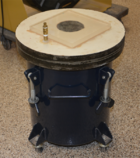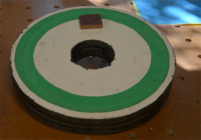Anyone using vacuum chambers to stabilize wood? I have wondered about this for some time but, never tried it as yet. I do have an old pressure cooker pot I could try this with but, I have a customer with some larger chunks of oak she would like made into bowls. The oak is punky on the outside and my proposed vacuum chamber is too small anyway. Can a steel drum be used a vacuum chamber? Or would it likely collapse in on itself? Just looking for answers before I talk to her about options. Also, the oak is wet about 25-30% moisture. Can it be stabilized as is or does it need to dry first?
Sorry if this is the wrong place for this question.
Thanks
Sorry if this is the wrong place for this question.
Thanks





